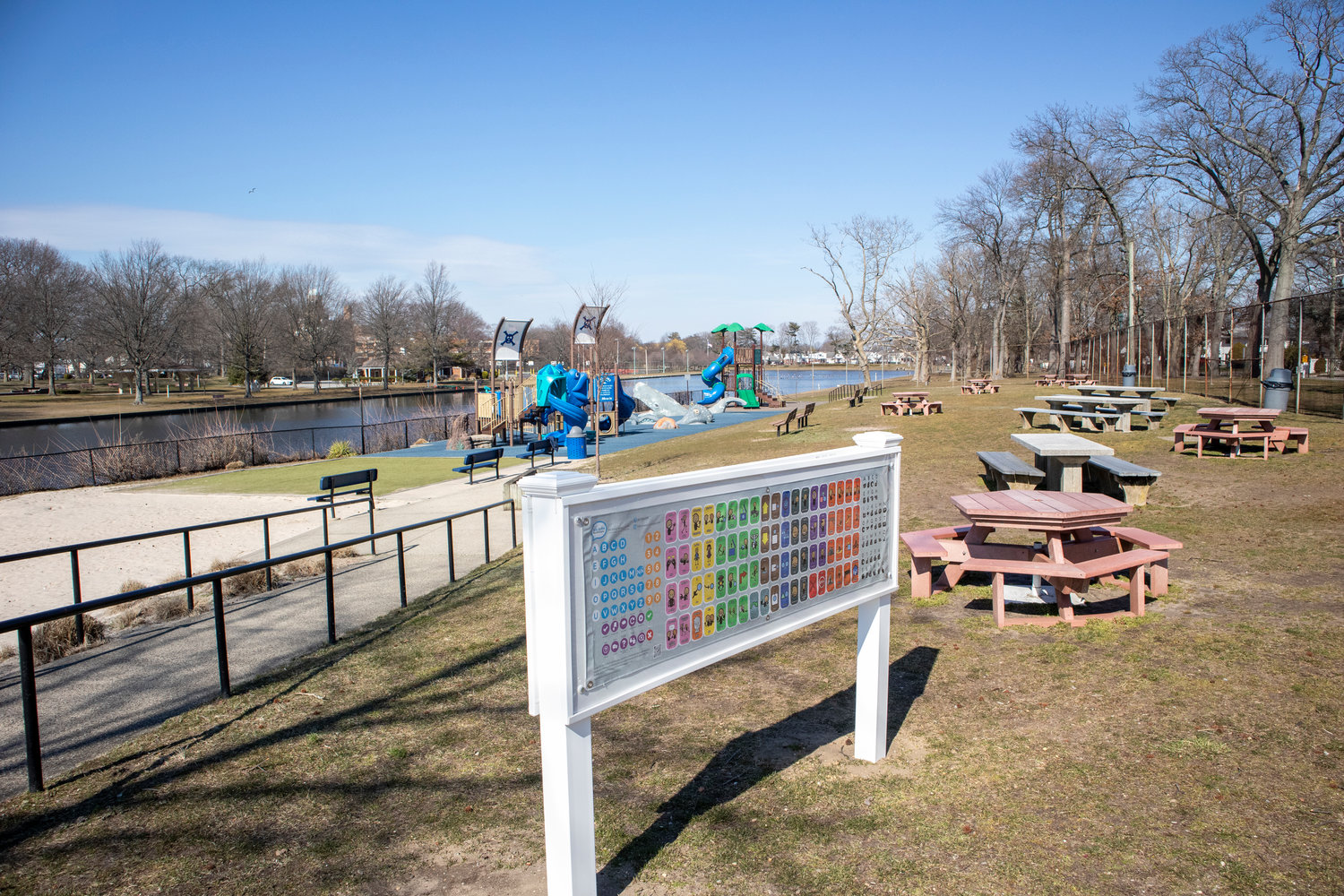This one tool makes playtime easier for kids with speech issues at Valley Stream parks
She made a passionate appeal to Mayor Ed Fare: Dedicate an official village-wide day for a little-known speech disorder that makes it difficult for kids to accurately move their mouth muscles while talking.
It’s known as childhood apraxia of speech. Michele Tritschler is a speech and language pathologist specializing in treating the rare disorder. And she hoped Fare would help her shine a public spotlight on a condition often overlooked by parents of young children, and misdiagnosed by even well-respected experts.
And, of course, Fare was ready to help to do just that. Thus, Childhood Apraxia of Speech Day was born May 14. It was, for the most part, a ceremonial gesture. But one that may have been the start of a larger, more solid push to support a wider circle of children and adults faced with speech disorders and communication in Valley Stream.
It all came to a head last week when Tritschler joined apraxia advocate and parent Melissa Herrera who teamed up with Fare and village recreation director Jimmy Fitzano at the Kay Everson playground space at Arthur J. Hendrickson Park. Their mission? Unveiling a tool Tritschler and other speech pathologists say will make public play spaces around their community more mindful and inclusive — communication boards.
Take a playground conundrum common to children with speech problems. A nonverbal or language-impaired toddler wants to invite another child to play or make friends, but communication between the two can pose a challenge.
Instead, the toddler can use a communication board to share basic emotional needs and preferences, work through social situations with others, gain self-confidence in sharing their own experience of the world — and more than anything — feel safer and more understood.
How does it work?
The board has a simple, brightly colored display, featuring roughly 70 illustrations paired with common-use words or messages covering things from familiar playground social situations — “Wanna play with me?” and “What’s up?” — to basic feelings and wants — “excited,” “hungry” and “lonely.”
“My son is apraxic, so the other day at the park while his sister was playing on the swings, he kept tapping the ‘her’ symbol on the board to say he wanted to get her attention,” said Herrera.“He would tap the ‘bathroom’ symbol to go to the bathroom, and he would be able to come and tell a friend that he needs help or wants to play.”
The menu of words is color-coded by parts of speech — an arrangement known to speech pathologists as the “Fitzgerald Key.” That makes it easier to locate the right type of message. Social words like “hello” and “goodbye” are in pink, while verbs like “play” and “run” are in green.
As for what went into choosing what messages to display, TalkTo MeTechnologies — the company that produces the boards — took the lead from researchers at the University of North Carolina at Chapel Hill, who curated a list of key vocabulary words deployed in social contexts.
Whether it be children with deafness, autism, or a speech learning delay, any child with speech challenges can use the board to improve their communication, Tritschler said. And ideally, it can serve as a stepping stone to acquiring more advanced language skills down the road.
Not to mention the board also has other neat features like a sign language alphabet, basic parental commands, and illustrations spelled out in Spanish as well as English.
So even caretakers of children without speech problems can use the board to turn their kid’s playtime into a teachable moment to practice their bilingual basics, work on their empathy and self-control, or maybe jumpstart learning sign language with a friend.
“This benefits all children,” said Regina DeMarinis Cunninghman, a pathologist with the Valley Stream school district. “Children that have verbal skills need the reinforcement seeing the words or actual pictures. A bilingual child that has trouble communicating in both languages can use this. And with the American sign language portion, a student that is hard of hearing can communicate with someone else who doesn’t understand sign language by spelling out what they need or want.”
It’s the perfect addition to the park for Herrera and her family. And for anyone else who stops by and enjoys the playground, too.
“There were children here, fully verbal, that were using the board when we got to the park,” she said. “They were just touching it and getting familiar with it, which takes away some of the stigma from a child that uses this device as their only form of communication. These boards are needed and appreciated.”
Have an opinion on this article? Send an email to jlasso@liherald.com.

 39.0°,
Fair
39.0°,
Fair 




